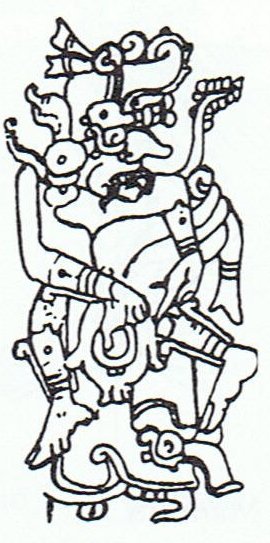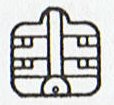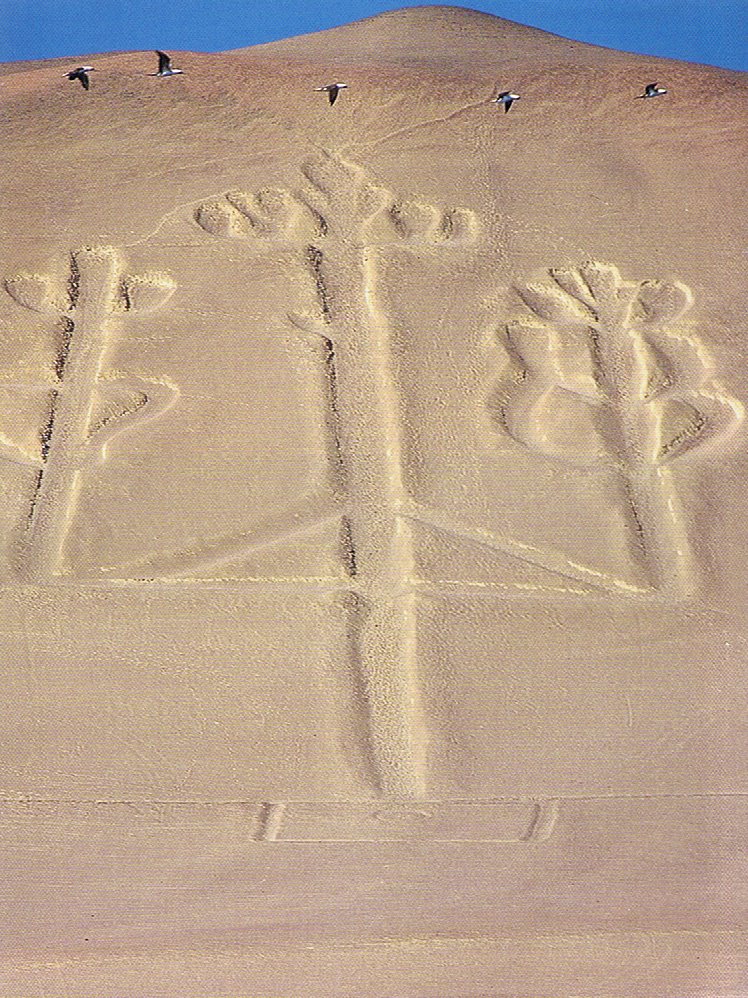|
TRANSLATIONS
Now page:
The crocodile is drawn as an entity separate from the 'tree' in the picture at right, although 'tree' and 'croc' of course cannot be separated. The form of the 'tree' suggests influence from Kankin (the 'rib tree'):
The artist seems to have depicted the 2nd half of the year at right. The 1st half - the ferociously eating half - will then be at left. The crocodile has prominent hands and at the top of his tail a bird with flames is perching. The bird at right could be Itzam Yeh, because obviously One Hunaphu is at bottom (only his right arm remains intact). He is standing in a kind of rectangular form, probably the same as that which can be observed in the enormous mountain side drawing on the west coast of South America, the 'Candelabra':
Here the tree growths from a circular outline in the center of the rectangle, while on the other hand the 'rib tree' in the image above stands in a kind of jar (probably empty because the tree is dry). The crocodile's tail apparently is cleft in two. The left part has the perching bird with flames and the right part has with 4 subdivisions connected to the 'tree' with 6 'ribs'. The right part is connected to the top of the 'rib tree' to indicate an everlasting cycle, I believe. The tail of the crocodile is like a hand - the thumb generates the fire and the other four fingers are needed for closing the cycle. Lots of other signs can also be read. The serpent, for instance, has his head in parallel position to the penis sheath of One Hunaphu. The turbulent flames emerging from the head of the 'phoenix' presumably illustrate the vertex at the pole. The hair of One Hunaphu is designed to look like the head of Itzam Yeh (whom he defeated). Embedded in the wing feathers of Itzam Yeh there is a glyph which I do not recognize. |




